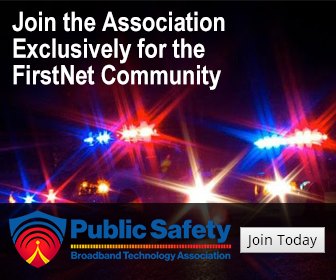By Roxy VanGundy
Kansas Unveils a Game-Changer for 911 Centers Across the State
If you’ve ever worked in 911, especially as an administrator, you know one of the most persistent thoughts lurking in the back of your mind is: What if?
What if the phones crash?
What if a tornado hits the building?
What if we get overrun with calls we can’t keep up with?
What if… everything goes dark?
Those “what ifs” are more than just hypotheticals for 911 administrators—they’re scenarios we have to plan for, over and over again. And they’re not always the big, cinematic disasters you see on the news. Sometimes it’s something as sneaky and silent as a lightning strike. Or as unrelenting as a Kansas windstorm.
In rural public safety communications, we don’t just worry about field operations—we worry about internal survivability. COVID taught us that lesson hard. Continuity of Operations Planning (COOP) wasn’t just a good idea anymore—it became non-negotiable.
Real-World Chaos, Real-World Pressure
Not long ago, a massive wildfire tore through several miles of our county—closing major highways, threatening homes, and overwhelming our small center with a surge of 911 calls and massive radio traffic.
Every year, we brace ourselves for our biggest public event, when more than 20,000 people flood into the heart of our city. But what happens when that event doesn’t go as planned—when it suddenly becomes a national headline? In those moments, we know one thing for sure: we’re going to need backup.
Here’s the truth: Unlike some of our larger counterparts in other states, we don’t have a secondary dispatch center. Sure, we’ve got bug-out bags—clipboards, printed maps, maybe a hotspot—but nothing that could sustain us through hours or days of being displaced. We don’t have extra seats. We don’t have a ton of spare radios. And CAD redundancy? Not without a miracle or a major budget overhaul.
It’s not that we don’t want those things—we just can’t afford them.
Enter: Kansas 911’s Rolling Lifeline
This is where Kansas stands out. Our State 911 Board isn’t just focused on the core services of Next Generation 911—they’re looking beyond. In May 2025, the Kansas State 911 Board, in partnership with the FirstNet Authority, unveiled something truly game-changing: the Emergency Mobile Dispatch and Training Center (EMDTC).
This isn’t your average trailer. This climate-controlled, high-tech mobile center is equipped with five fully functional dispatch workstations, complete with access to the Kansas Statewide Interoperable Radio System and multiple CAD and phone platforms. It’s supported by industry leaders like AT&T, RapidDeploy, and Motorola—and it’s ready to roll.
If a 911 center in Kansas goes down? This trailer can be their center.
If a rural agency needs additional seats during an incident or large event? This trailer can supplement.
If a small county needs hands-on training but can’t afford to lose people to travel? The EMDTC comes to them—offering on-site instruction, minimal disruption, and major savings.
When You Have Nothing Else, this is Everything
The addition of this unit isn’t just “cool tech.” It’s reassurance. It’s options. It’s a sense of backup for centers like mine that have historically had to cross our fingers and make do.
It’s also a reminder that rural PSAPs aren’t forgotten. That someone is thinking of our needs, our constraints, and our safety—not just the urban giants. The Kansas State 911 Board didn’t just imagine a shiny new toy—they delivered a critical tool designed with real-world needs in mind.
As a 911 Director, I sleep better knowing that this resource exists. I hope we never have to use it—but I’m beyond thankful it’s there.
Because in 911, it’s not a matter of if something happens. It’s when. And now, we’re just a little more ready.


